Time management is about organizing your day to reduce stress and increase productivity. Here’s how you can take control of your schedule:
Quick Comparison of Planner Types:
| Planner Type | Best For | Key Features | Drawbacks |
|---|---|---|---|
| Bullet Journal | Creative planners | Fully customizable layouts | Time-consuming setup |
| Traditional Planner | Structured schedules | Pre-designed, ready-to-use | Limited adaptability |
| Hobonichi | Balanced approach | Compact, high-quality options | Less flexible for setup |
Choosing the right planning tools can make managing your time much easier. The trick is to find tools that align with your daily habits and preferences.
Different planners cater to different needs. Here’s a quick breakdown:
| Planner Type | Best For | Key Features | Drawbacks |
|---|---|---|---|
| Bullet Journal | Creative planners | Fully customizable, flexible layouts | Time-consuming setup |
| Traditional Planner | Structured schedules | Pre-designed, ready-to-use layouts | Limited adaptability |
| Hobonichi | Balanced approach | Dated pages, high-quality paper, compact sizes | – |
The Bullet Journal, designed by Ryder Carroll, is all about flexibility. As Carroll puts it, "The Bullet Journal is meant to help you track the past, organize the present, and plan for the future" .
If you’re looking for a mix of structure and flexibility, Hobonichi planners are a great option. They come in various styles: the A5 Cousin includes weekly spreads, the slim Weeks format is perfect for minimalists, and the Day-Free version offers undated pages for irregular schedules .
Once you’ve picked your planner, having the right supplies will enhance your planning experience.
Good supplies can make planning both effective and enjoyable. Here are some top-rated tools to consider:
Pens and Markers:
For those who enjoy adding a personal touch, Dark Moon Paper offers themed sticker kits like "Lilac Dusk" and "Winter Hygge." These include decorative elements and functional stickers such as checklists, headers, and trackers.
Tips for Supplies:
The most effective system is the one you’ll stick with consistently.
Create planner pages that combine structure with a touch of personal style.
Breaking your day into time blocks helps you stay organized, while color coding makes it easier to spot priorities at a glance. Here’s a quick guide:
| Time Block Type | Color Suggestion | Purpose |
|---|---|---|
| Work Tasks | Blue | Professional commitments |
| Personal Tasks | Green | Self-care and errands |
| Family Time | Purple | Family activities |
| Exercise/Health | Red | Fitness and wellness |
| Creative Projects | Yellow | Artistic endeavors |
Start your schedule by adding fixed commitments, like meetings or appointments, as anchors. Dark Moon Paper’s “Electric Forest” sticker kit can help with pre-made time block labels that are easy to use. Their color-coded dots are perfect for quickly identifying task categories.
Your page layout plays a big role in keeping things streamlined and visually appealing. Whether you’re planning daily or weekly, choose a structure that works for you.
For daily layouts, divide your page into three sections:
Add a personal touch with Dark Moon Paper’s “Starlit Sakura” or “Winter Hygge” stickers. These include functional elements like checkboxes and headers while keeping the design stylish.
For weekly spreads, try this setup:
"I have tried so many different planner styles, and this one truly is my favorite!" says Angela , highlighting the balance of structure and decoration in her layouts.
With these strategies, your planner can be both functional and fun to use.
Turn your daily plans into tangible accomplishments with progress tracking. Research suggests that using color-coding can improve memory and mental focus . For a visual approach, consider Dark Moon Paper’s "Violet Frost" tracker stickers to create effective trackers.
Here are a few tracking methods to consider:
| Tracking Method | Purpose | Implementation Tips |
|---|---|---|
| Habit Grid | Monitor daily routines | Split the grid into morning and evening sections |
| Task Categories | Organize by priority | Use 4–5 distinct colors for better clarity |
| Time Blocks | Stay on schedule | Compare planned time versus actual time spent |
For more complex projects, the Eisenhower Matrix is a great option to categorize tasks by urgency and importance . For instance, Tarek Khatib uses specific colors – Lavender, Imperial Red, Blue, Yellow, and Green – to represent personal, work, university, health, and family tasks, respectively .
These methods can seamlessly fit into your planner, offering both structure and motivation.
Pair your tracking system with visually engaging elements to encourage regular use and task completion . Dark Moon Paper’s "Winter Ravens" and "Cottage Succulents" collections combine practicality with inspiration.
Here are some ways to stay motivated:
"When you have a planner that you enjoy using, you’ll find yourself checking it more often, making it easier to stick to your tasks and achieve all your personal and business goals faster." – Juliet Dreamhunter
For example, a team member at Appointed uses green for an upcoming planner collection launch, blue for internal system updates, and yellow for website management tasks .
To make your tracking system both practical and inspiring, try these ideas:
Seeing your progress on paper can keep you motivated and help you build consistent habits . Connecting related habits can also create momentum for lasting routines.
Taking time to regularly review your plans can fine-tune your system and help you make better decisions .
| Review Type | Frequency | Key Focus Areas |
|---|---|---|
| Weekly Review | Sunday evening | Check progress, plan for the week ahead |
| Monthly Review | Last day of month | Align goals, track habits |
| Quarterly Check | Every 3 months | Evaluate strategies, adjust resources |
Instead of just analyzing what went wrong, focus on actionable solutions. For instance, if morning tasks keep getting pushed back, consider waking up earlier or rearranging your schedule.
"Regular reviews are more than just a quick glance at your to-do list. They are a strategic approach to assess your progress, realign your goals, and adjust your strategies." – janesagenda.com
Dark Moon Paper’s "Violet Frost" collection includes review pages with checklist stickers, making it easier to track your key metrics over time.
These reviews help you tackle common planning challenges head-on.
Even seasoned planners run into roadblocks that can throw off their time management.
Overcommitting and Unrealistic Scheduling
Keep track of how long tasks actually take to avoid overloading your schedule. Tools like Dark Moon Paper’s planner stickers can help you better allocate your time.
Struggling with Task Prioritization
Try using the ABC method :
Handling Distractions
Distractions can seriously derail your productivity . Silence notifications and use time-blocking to stay focused. Over time, this will also help you identify patterns in what distracts you most.
To stay on track, measure your progress with clear metrics. Combine both numbers and observations to evaluate your success:
Time management isn’t just about schedules – it’s about directing your attention wisely. With 85% of workers feeling overwhelmed and 75% struggling to prioritize effectively , finding a system that works for you is crucial. Written planning, for instance, has been shown to boost success rates by 42% . Tools like Dark Moon Paper’s themed collections, such as Violet Frost and Winter Ravens, can turn planning into a more enjoyable daily habit.
Here are a few strategies to help you take control of your time:
| Strategy | Why It Helps | How to Start |
|---|---|---|
| Daily Reviews | Spot patterns in your day | Track activities for 30 days |
| 1-2-3-4 System | Builds momentum | Rank tasks by difficulty or priority |
| Bullet Journaling | Clears mental clutter | Combine lists, calendars, and goals |
These methods offer a practical framework to simplify and improve your planning routine.
"The truth is, it takes more energy to keep something inside your head than outside." – David Allen
Research shows that journaling not only helps with organization but also boosts memory and thinking skills . Starting is as easy as grabbing a notebook and pen. From there, you can tweak your approach to fit your style. Instead of rigid schedules, focus on managing your attention and staying flexible . The best time management system is one that works naturally with how you think and operate.
Stickers Made for Planning
Our custom stickers are a fuss-free way to brighten up your planner pages with perfectly-sized designs that add a spark of personality to every layout.
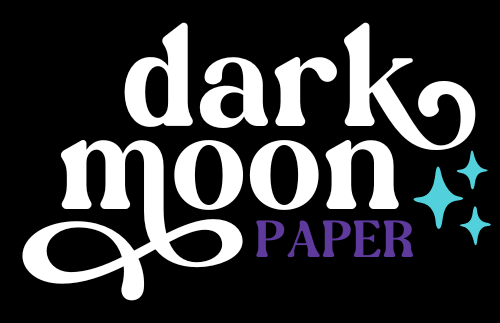
Why use planner stickers?
Planner stickers make organizing easy, fun, and personal! Add color, creativity, and structure to every page, transforming your planner into a tool that reflects you. Perfect for tracking, decorating, and staying inspired daily!
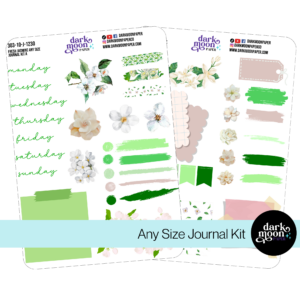
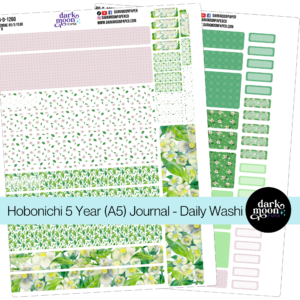
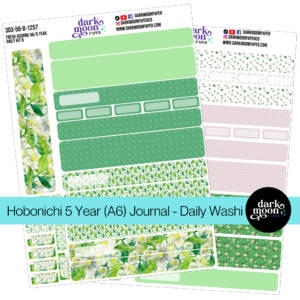
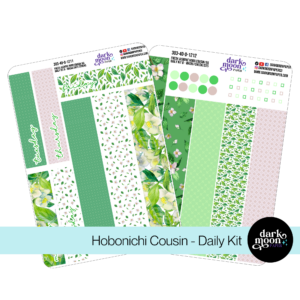

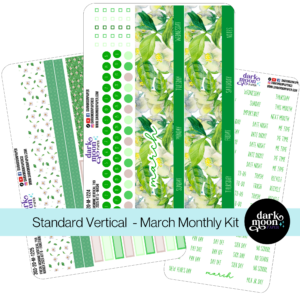

Hello and welcome!
I’m Rachael Snow, a lifelong artist and entrepreneur, and I started Dark Moon Paper to blend my love of art, technology, and the mysterious beauty of the world around us. My sticker kits are meant to set the mood, tell a story, and give you a little escape from the ordinary.
I work from my cozy studio tucked away in the beautiful woods of Oregon, surrounded by nature and a dark night sky full of stars.